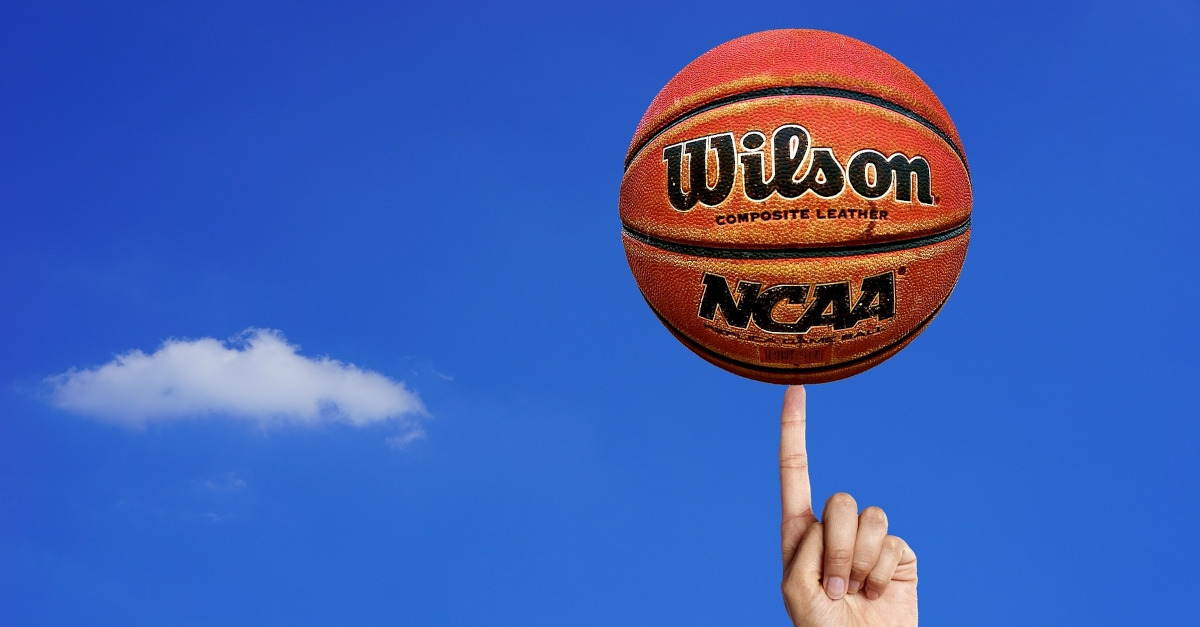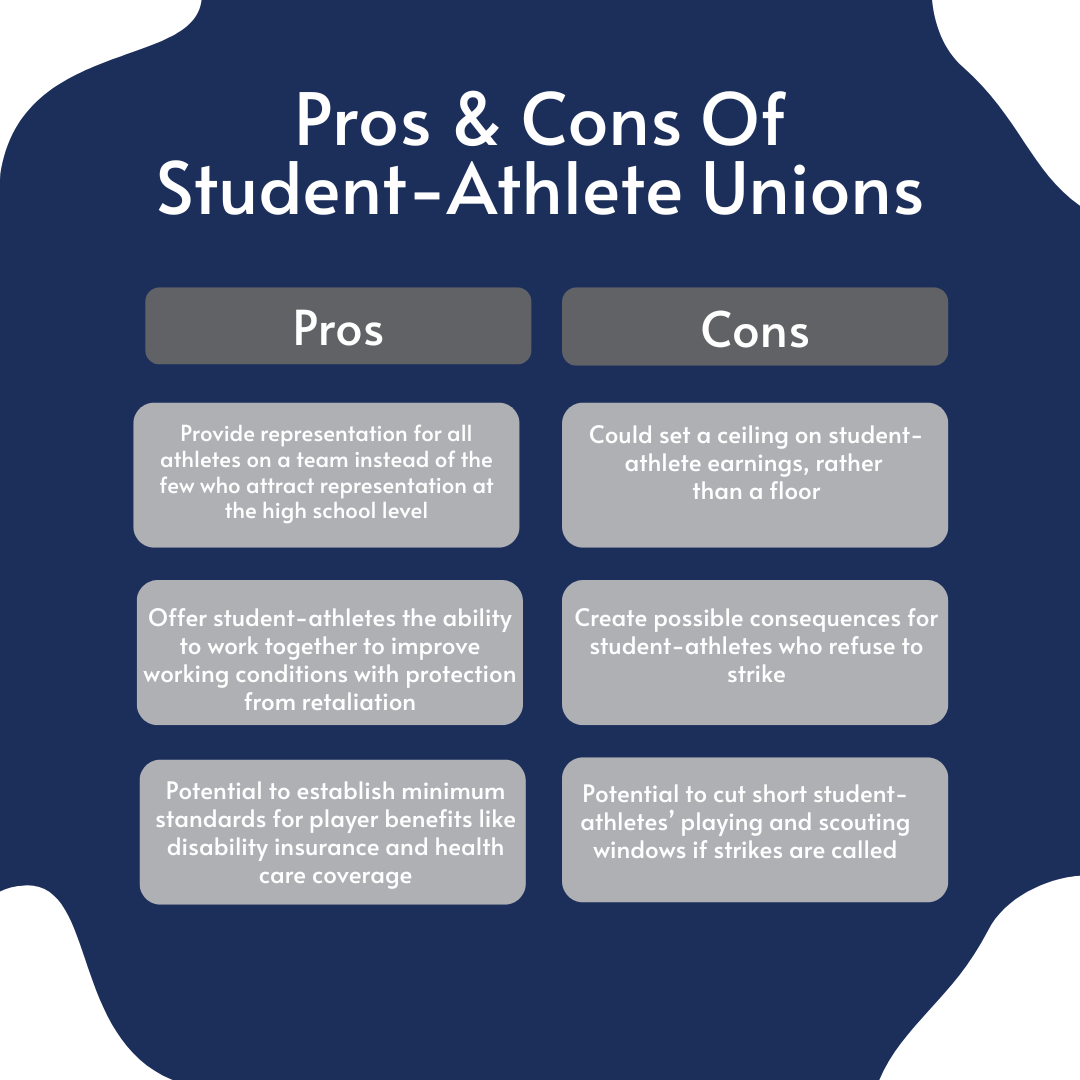Autumn is an exciting time of year for fans of college sports. But with football season well underway and basketball season fast approaching, it is worth asking: Why don’t the athletes who generate value for their schools get compensated for their hard work?
The Case For Paying Student-Athletes
Student-athletes who participate in certain sports — football, men’s basketball and, more recently, women’s basketball — perform personal services for schools that result in millions of dollars of annual revenue. Colleges and universities, along with the NCAA, have largely avoided sharing that profit with players in the name of preserving “amateurism” in college sports. This practice is indefensible.
The 3rd U.S. Circuit Court of Appeals ruled in July that the NCAA should develop a test to differentiate between students who play sports in college simply because they enjoy it from those whose commitment “crosses the legal line into work.” The court said that students in the latter group may qualify as employees who are due the legal protections under federal wage-and-hour laws. Since the appeals court did not dismiss the case, as the NCAA hoped, it will return to the trial judge for fact-finding.
The court invoked the “economic realities” test for whether college athletes are employees under the Fair Labor Standards Act: “[...] when they (a) perform services for another party, (b) ‘necessarily and primarily for the other party’s benefit,’ (c) under that party’s control or right of control, and (d) in return for ‘express’ or ‘implied’ compensation or ‘in-kind benefits’.” The 3rd Circuit, while sending the case back to the district court to decide whether these tests apply to college athletes, made clear that the NCAA will have to do better than invoking “amateurism” to convince the court that employee protections do not apply.
This case is the latest in a series of legal challenges to the NCAA’s claim that paying students would undermine the presumed merits of amateurism in college sports. However, not only is it not yet settled, it is not definitive: earlier rulings in the 7th and 9th Circuit Courts held that student-athletes are not employees under any circumstances. These differing findings make it more likely (though not certain) that the matter will eventually make its way to the U.S. Supreme Court.
The NCAA has argued that athletes are similar to students who participate in college theater, orchestras, newspapers and other on-campus extracurricular activities. Further, and somewhat contrarily, the association and schools with major athletic programs have said that Division I student-athletes often receive scholarships that cover all or most of the cost of their college education, which already amounts to compensation. But paying students directly, the NCAA claims, would make their coaches their bosses, which would somehow hurt the overall spirit of college sports.
This argument is a poor one. When I was in college, I was allowed to work, even though I received a need-based scholarship. In fact, not only was I allowed to work, but a work-study job was part of my financial aid package. I reshelved books in what was then the rare books collection in Duke’s Perkins Library, up to 20 hours per week, for pay. Meanwhile, the players on the men’s basketball team could not receive compensation for the many hours they dedicated to practice, training, games, and travel to and from away games for most of the school year. I’m sure they worked more hours than I did during the weeks leading up to and during the season, all while still attending classes, doing homework and studying for exams.
That was more than 30 years ago. For many student-athletes today, off-seasons no longer exist. Estimates from Division I players peg the commitment at 30 hours or more per week. Former NBA player Shane Battier wrote as far back as 2016, “Today, many student-athletes have schedules that budget their time down to the very last minute.” He noted, too, that athletes participating in major college sports often must commit to off-season workouts even when their sport is not actively in season. Players frequently face “voluntary” workout requirements year-round, which are voluntary in name only.
I am not the only one comparing student-athletes’ contributions to those of students with work-study arrangements. The Division I athletes and former athletes who brought the lawsuit I discussed earlier in this section are explicitly seeking wages similar to those earned by their work-study peers. While this change would hardly solve every problem with college athletics, it would at least recognize the labor that student-athletes contribute to what has become an incredibly lucrative enterprise at the highest levels, and that the degree of control athletic programs often exert makes it difficult or impossible to hold another part-time job while attending university.
Under pressure, the amateurism argument is sometimes complemented or displaced by another argument: Sure, student-athletes are workers, but they are independent contractors rather than school employees.
The problem is that the difference between an employee and an independent contractor isn’t up to the schools (or the NCAA). The Internal Revenue Service set forth a 20-factor test to determine whether an employer may treat a given worker as an independent contractor for employment tax purposes. IRS guidelines state: “Under common-law rules, anyone who performs services for you is generally your employee if you have the right to control what will be done and how it will be done.”
The Service goes on to clarify that this is true even if employers give workers some amount of latitude. “What matters,” the IRS says, “is that you have the right to control the details of how the services are performed.” The IRS also makes clear that the worker’s job title or label imposed by the employer does not matter and cannot override these rules. (For more on the differences between employees and independent contractors more broadly, see this article by my colleague Melinda Kibler.) If college athletes are to be paid, it will not be up to the schools how to classify them as workers.
A Changing Landscape
The courts are beginning to recognize the realities of student-athletes’ situation. One of the most major signals of this reality is the U.S. Supreme Court’s decision in National Collegiate Athletic Association v. Alston in 2021, which struck down the NCAA’s grant-in-aid cap, finding that it violated established antitrust principles. This opened the door to “name, image and likeness” deals, which the NCAA had previously prohibited. While Alston did not deal with student-athletes’ status as employees, it was a strong signal that the NCAA should not expect arguments about tradition alone to sustain its position.
Earlier this year, the NCAA and the Power Five conferences announced a proposed $2.8 billion settlement in three antitrust cases concerning compensation and benefits limits for student-athletes, including NIL deals. As part of the settlement, the NCAA eliminated rules banning direct payments from schools to athletes and allowed (though did not require) revenue sharing with current and former student-athletes. However, the settlement may require further adjustments before it can take effect. Judge Claudia Wilken, of the Northern District of California, recently expressed concerns over the settlement’s treatment of outside NIL deals and suggested attorneys for the parties involved “go back to the drawing board.” Until the deal is final — or until it is rejected and the parties go to court — the precise effect of this dispute on college athletics will remain unclear. That effect, whatever it is, will likely be major considering the size of the proposed settlement.
Regulators, like jurists, are increasingly indicating that they are willing to side with students, or at least push back harder against the NCAA and college athletic programs. In parallel with the cases I have already discussed, a complaint filed with the National Labor Relations Board in 2023 alleges that the University of Southern California, along with the NCAA and the Pac-12 Conference, violated the National Labor Relations Act by misclassifying players on the University of Southern California’s football, men’s basketball and women’s basketball teams. This complaint is still in process at this writing.
The NLRB decided a similar complaint in favor of Dartmouth basketball players in February 2024. Dartmouth’s basketball team expressed a desire to unionize, and Region 1 of the NLRB recognized their right to organize as employees. In the ruling, the Board supported their decision by citing Dartmouth’s “right to control the work performed by” the players and the fact that “the players perform work in exchange for compensation.” (While Dartmouth players do not receive scholarships, the Board found that special treatment, apparel and equipment, and a variety of other “fringe benefits” qualify.)
This decision represented the second time the NLRB had ordered a union election for a college athletic program. The first instance, in March 2014, concerned Northwestern University’s football team. In that case, the university requested a review of a regional ruling from the full NLRB, which declined to accept jurisdiction over the matter in 2015. Dartmouth has, predictably, asked the Board to do the same in this case, refusing to bargain with the athletes’ newly formed union in the meantime. While the dispute is ongoing, Dartmouth’s players have reason to hope for a different outcome than Northwestern’s earlier attempt.
What changed? For one thing, the tide of public opinion, likely in part due to sustained activism from current and former student-athletes. But Dartmouth’s players had an additional reason to be optimistic. During the decade between the Northwestern and Dartmouth cases, the NLRB proactively issued guidance finding that Division I college athletes were employees generally, and thus had the right to unionize under the National Labor Relations Act. This 2021 memo invited actions like that of Dartmouth’s team, and will likely result in more cases focused on whether student-athletes could be employees and under what conditions.
Pros And Cons Of Student-Athlete Unions
Recognition of student-athlete unions demonstrates a wider understanding of their status as employees, which is overall great news for college athletes. On a case-by-case basis, though, they may not always find unions in their best interests. Heavily recruited Division I athletes participating in sports like football and basketball may earn higher wages in a competitive, nonunion marketplace. Collective bargaining might effectively set a ceiling on their earnings, rather than a floor.
If the NCAA and universities are forced to recognize athletes as employees, they are likely to prefer unionization. Negotiating collectively will doubtless seem simpler — and, incidentally, cheaper — than negotiating employment contracts with individual students.
These institutions may also suggest that individual negotiations will result in less parity across conferences, because schools with more financial resources can attract and pay top talent more. This argument is weak, however, since this disparity exists now, even without paying student-athletes. Schools with greater resources offer the best coaches and facilities, which helps those schools attract top talent.
While there is not always a one-to-one correlation between “things universities would prefer” and “things that are bad for student-athletes,” it should at least give the most competitive players pause if schools start singing the praises of unions once it becomes clear that they can’t win the amateurism fight.
Further, given the limited period in which college athletes slated to enter the NFL or NBA draft become eligible (after three seasons of college football and after one season of men’s college basketball, respectively), striking for certain employment benefits could have outsize costs for players. Top-tier players only have a small window to prove to scouts that they deserve to play at the professional level as it is. Fewer than 4% of Division I athletes in football or basketball go on to play professionally in the United States, with a handful more securing jobs abroad. Will student-athletes be willing to strike, sacrificing some of this window, to fight for benefits that will mainly benefit the student-athletes who come after them? Will they face consequences if they play for a unionized team and refuse to strike?
In this transitional period as unions start to gain traction, prospective college athletes are likely to maintain some level of choice in deciding to play for a team that has unionized or one that has not. But over time, if unionized teams become standard in Division I sports or even more broadly, players may face a “take it or leave it” attitude from the schools recruiting them.
Transitioning From Amateurism To Professionalism
While growing legal and regulatory momentum is pushing for at least some student-athletes to become employees, the transition cannot happen overnight on a national scale. The transition from “amateur” student to employee would require action from a variety of organizations.
Colleges and universities, likely in cooperation with the NCAA, will have to lay out terms of employment for whichever student-athletes they begin to treat as employees. This will include, for example, determining which activities count as hours worked: obviously games, but also potentially practices, required physical training outside practices, travel to and from away games, and more. Schools will also need to decide how to structure employment. They might offer “at will” arrangements, or a contractual agreement to cover a certain number of years.
Schools will also need to determine how wages will interact with scholarships and other existing benefits. Schools may reduce or revoke merit scholarships since they, unlike wages, would not be required by law. It remains to be seen how much schools will try to make this change a zero-sum game for their students. Even beyond this direct trade-off, students may find that need-based aid will be reduced, since student income is typically a major portion of determining expected contributions toward the cost of attendance.
Some of the transition would also require action or input from legislators or regulators. A central question that I’ve already touched on is whether employee status would extend to all athletes participating in college sports. Would the determination only extend to Division I players? Would there be some litmus tests that hinge on how much control the school exerts over players’ schedules and activities? The NLRB may weigh in on these questions proactively. If not, they are likely to be decided in the courts — a process that could take serious investment in time and resources from all parties.
We must also wait to see how treating some student-athletes as employees affects existing laws such as the Employment Retirement Income Security Act of 1974 — usually shortened as ERISA — and Title VII of the Civil Rights Act of 1964. The National Labor Relations Act is not the only federal law in play when determining who is an employee, and schools determined to resist the classification may make the waters as muddy as possible for as long as they can.
Some observers have also expressed concerns about the ways in which recognizing college athletes as employees might affect Title IX of the Education Amendments of 1972. Critics of the idea of paying student-athletes have suggested, for example, that there will be no way for women’s sports to ensure parity when men’s sports are generally much more lucrative. In turn, NCAA critics have argued that there are already discrepancies in how schools treat, for example, their men and women’s basketball teams, even as the latter sport grows in popularity.
While many of the details of professional student-athletes are complex, some questions are clear: Any students who qualified as employees would be subject to federal (and state) minimum wage laws, for example. They would also likely be eligible for overtime, though this question is less obvious. Student-athletes are unlikely to be “exempt” under the Fair Labor Standards Act. This means that in any weeks where they work more than 40 hours, they are entitled to time and a half. What is less clear is whether certain activities, such as travel to away games, would be compensable time. It is also possible that lawmakers could carve out a status for college athletes similar to the exemption that already covers professional athletes.
Scholarships cannot count as wages (which is, in part, the foundation of the current fight to pay student-athletes directly). But it remains to be seen if schools can count the NIL earnings they pay student athletes toward the students’ overall compensation. If the NCAA allows profit sharing, this sort of overlap seems at least possible. When players enter into deals with third parties, however, it seems less likely that schools could successfully argue that such NIL payments are part of the player’s wages. But could they restrict which deals a player takes or the terms of those deals, the way employers can restrict moonlighting or other work their employees take on in their off-hours?
I do not have all the answers to how paying college athletes for their work will look in practice. But the hard work of hammering out these details will not become easier if it is delayed. It is past time for the NCAA, and the schools that participate in it, to recognize the contributions of their athletes and compensate them in a fairer way.














